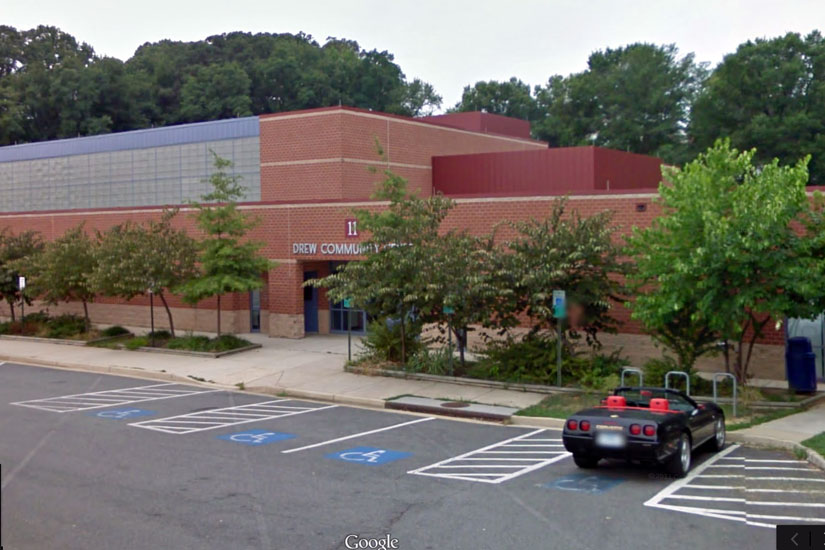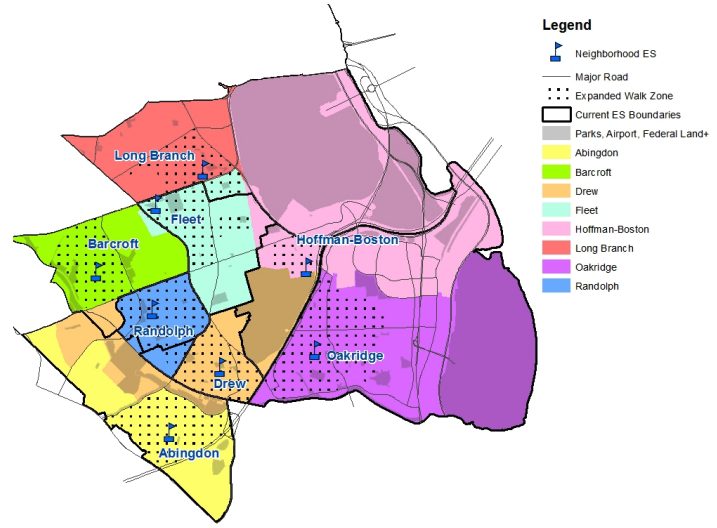The ever-contentious process of setting new elementary school boundaries is picking up steam in Arlington, with the school system spending the next few weeks collecting community feedback ahead of a School Board vote before the year is out.
Arlington Public Schools will hold an “open office hours” with planning staff tonight (Oct. 3) to let parents discuss the proposed boundary maps, and will accept online comments on the redrawn boundaries through next Wednesday (Oct. 10).
This latest boundary adjustment, designed to accommodate the opening of Alice West Fleet Elementary School ahead of the 2019-2020 school year, is set to impact a total of eight elementary schools in all. The current list proposed by staff includes:
- Abingdon
- Barcroft
- Drew
- Fleet
- Hoffman-Boston
- Long Branch
- Oakridge
- Randolph
Abingdon, Barcroft and Long Branch are also set to be impacted by boundary changes in the fall of 2020, as will 12 other schools.
But, in the meantime, school officials hope to sort how to best tweak boundaries around the South Arlington elementary schools, in order to equitably reduce overcrowding and move students into Fleet in an orderly way.
Current estimates show that five of the schools involved in the process will see substantial decreases in student populations as part of the change. Abingdon, Barcroft, Long Branch, Oakridge and Randolph are all currently over their designed capacities, and all will see population drops by anywhere from 13 percent to 40 percent.
Even still, some parents are wary of the proposed boundaries, particularly those with students at Drew Model School.
Miranda Turner, a parent who lives in Drew’s attendance zone in Nauck, told ARLnow that she was particularly concerned that the school “seems to get the short end of the stick” under the current proposal.
“It’s really complicated, and I get that… but, in a world that involves necessary trade-offs, it’s not clear to me that there are any tradeoffs here to make up for the negatives,” said Turner, who has two kids currently in the school’s Montessori program and a third who could someday attend the school.
Turner is primarily concerned that the proposed changes would mean that Drew students could advance to three different middle schools, instead of just one, which might separate students from classmates they’ve befriended over the years. She chalks up part of the problem to the way the new boundaries extend out a bit to grab areas that won’t be within walking distance of Drew, another disturbing factor to Turner.
She also notes that the school system’s data show that Drew would see its possible population of students eligible for “free and reduced price lunch,” a measure of their families’ economic means, jump up to 83 percent.
The school system presents figures show that 85 percent of students at the school are currently eligible, but Turner points out that’s only because APS staffers aren’t considering the demographics of the Montessori program, which features students from much wealthier backgrounds. Drew officials reported in October 2017 having just over 51 percent of its students eligible for free and reduced lunch, when considering the whole population.
With the Montessori program set to move to Patrick Henry Elementary School next year, Turner feels the current boundaries are a missed opportunity to keep the school’s current demographic mix a bit more like it looks currently.
“This change is going to make Drew one of the most low-income schools in Arlington, where it’s relatively balanced right now,” Turner said. “And that’s going to present real challenges when it comes to things like funding the PTA.”
APS planner Robert Ruiz isn’t sure that such a comparison is wholly appropriate, however. The figures APS staff are using in the boundary process represent the possible universe of students who are eligible to attend Drew by dint of living within its boundaries, but they could end up heading elsewhere. Meanwhile, the 51 percent figure Turner is pointing to is indicative of the students who actually attend Drew in practice, so it’s no guarantee that the change will be as drastic as the one Turner describes.
By the school system’s data, Drew’s attendance zone would actually see a 2 percent decline in the number of students eligible for a free and reduced price lunch. It’s a drop that Lisa Stengle, the APS director of planning and evaluation, points out is a small one, but could always change the more planners talk to the community and Board members.
“We’re really still working through and talking to the Board about: are there other options?” Stengle said.
Turner is hoping that school officials will listen to some of the Drew community’s concerns, perhaps by leaving some students in the Columbia Forest neighborhood set to be sent to Drew remain zoned for Abingdon instead. She’s well aware that tinkering with the current map in any way will prompt a domino effect for other neighborhoods, but she’s hoping that APS will be able to come up with a proposal that presents fewer problems for Drew, specifically.
“There is no answer that will make everybody happy, but we think there are improvements that can be made,” Turner said.
The open office hours are set to run from 7-8:30 p.m. tonight at Kenmore Middle School. The Board is also planning to hold a work session on the issue on Oct. 10, where APS officials are hoping to get a bit more insight into what the Board hopes to prioritize.
A public hearing on the boundaries is set for Nov. 27, then the Board plans to pass a new map on Dec. 6.



